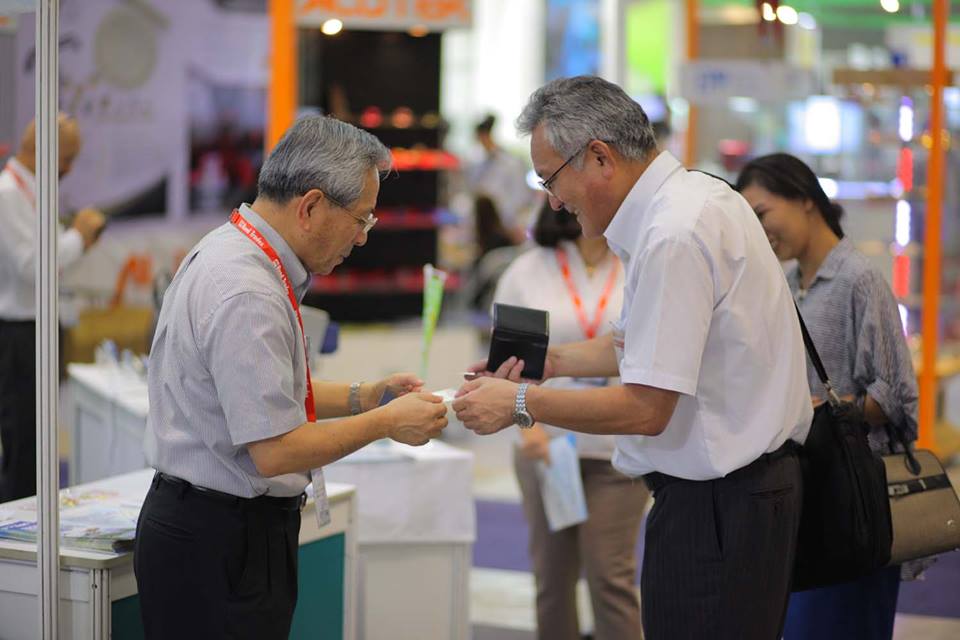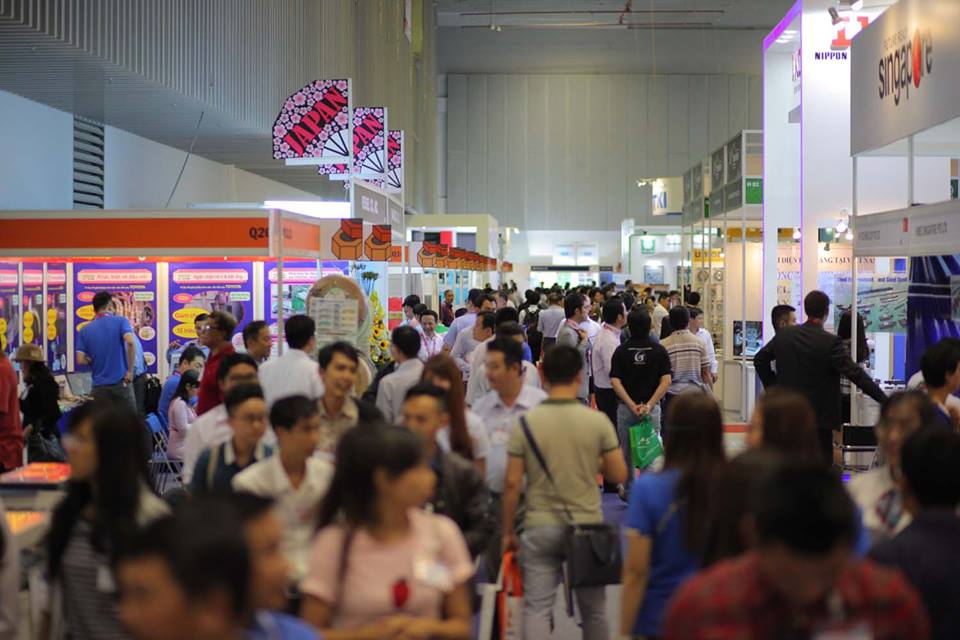Localisation: game-changer for Vietnamese manufacturing industry
| RELATED CONTENTS: | |
| Reed Tradex: A manufacturing liaison | |
| Ten year celebration for Reed Tradex | |
| NEPCON to power up new technology | |
Reed Tradex has organised many exhibitions in Vietnam. How do you evaluate the interest so far?
 |
The continuing growth of foreign direct investment (FDI) flows into the country over the years, hitting $24.4 billion in 2016, has enabled the industry to grow and industrialists are eager to find new technologies to meet the current trends. International trade show and event attendance is expected to grow in Vietnam as it is the place to gather and display content and resources to foster economic development.
Currently, Reed Tradex is organising three international exhibitions in Vietnam, Metalex Vietnam, Nepcon Vietnam, and Vietnam Manufacturing Expo. More than 10,000 industry members have joined each of our exhibitions to explore technologies and take part in informational and educational conversations throughout the forum and seminars. The growing number of visitors at our exhibitions, averaging at 11-15 per cent a year, reflects the concerns of Vietnamese industrialists over connectivity and market updates.
Reed Tradex’s events aim to connect potential domestic and foreign partners. What do you think of the state foreign direct investment took in recent years?
In 2016, Vietnam attracted a total FDI inflow of $24.4 billion, of which the largest foreign-invested sector, manufacturing and processing, accounted for some 60 per cent. Korea was Vietnam’s largest FDI source ($7 billion), followed by Japan and Singapore. This partly reflects Vietnam’s potential, as well as the ample opportunities to connect with strong Asian investors and create new and prosperous manufacturing areas.
The investment has not been limited to low-end labour-intensive manufacturing. Increasingly, high-tech electronics producers are establishing a presence in the country. This trend is likely to persist and stems from the continued investment expansion of global tech giants like Samsung, Intel, LG, Panasonic, and Microsoft.
Vietnam’s impressive export growth is largely driven by FDI. According to the Ministry of Planning and Investment, the foreign-invested sector accounted for 72 per cent of Vietnam’s total exports and nearly all of its telephones, electronics, and computers and components exported in 2016. While electronics exports from Asia rose by 17 per cent between 2010 and 2014, Vietnam's contribution ballooned by about 10 times, according to Singapore-based DBS group research. It cannot be denied that Vietnam is benefiting enormously from FDI inflows, however, a long-term plan is essential to keep Vietnam moving forward on a sustainable path.
In this context, what opportunities does Vietnam need to grasp and what challenges will the country face in the process?
In the past, a growing number of foreign companies invested in manufacturing, attracted by low-wage workers and favourable tax incentives. The entry of Samsung was a game-changer for its electronics exports. The Korean giant started employing thousands of workers and bringing in its wake several hundred foreign component makers.
Another high-technology firm, Intel, build the world’s biggest testing and assembly facility in Vietnam, involving $1 billion of foreign direct investment, which contributed to the country moving up the production value chain. This was all despite the woeful lack of adequate local suppliers. Additionally, Intel is currently engaged in training and entrepreneurship development programmes for domestic companies to increase its localisation rate.
Over the years, Vietnam also put in place an attractive tax regime for corporations. Corporate income tax was progressively brought down from 25 to 22 per cent in 2014 and 20 per cent in 2016. Special packages are available to promote specific sectors, including high-technology. High-technology zones and some industrial areas also receive further tax benefits.
Nonetheless, the long-term sustainability of the industry will depend on whether Vietnam can raise productivity and move up the value chain. The country will also need to develop its own talent pool to sustain the trend. Otherwise, not only electronics, but other industrial manufacturers will migrate on to cheaper locations once wages start to rise. Indonesia, Cambodia, Laos, and Myanmar all represent competitive alternatives for global manufacturers.

The benefit to the country is clear, but how will manufacturers benefit from increasing localisation?
Vietnam offers preferential tax rates, a young and abundant labour force, as well as cheap land, and a competitive exchange rate. Once more, I would like to emphasise that Vietnam has too many advantages for foreign investors pass up. I do believe that the existing incentives have persuaded large foreign investors to be willing to undertake high investments, even in the lack of local supply chain capabilities.
The localisation rate in Vietnam is only about 10 to 30 per cent, which does not reach the required rate to enjoy preferential treatment in most free trade agreements, which set the threshold at 45 per cent. For long-term development, giant investors, such as Samsung, Intel, and Microsoft, appear ready to invest and to engage in building local capacities by training workers and supporting related businesses.
What difficulties do manufacturers encounter when trying to increase localisation?
Each production unit needs to clearly identify its goals of upgrading the technology of the production line to satisfy global standards and accordingly develop resources to operate the new systems. Indeed, technological and production capability-building in local firms is basically driven by human capital development. The core of it is knowledge-intensive activities and technical training. Learn from the global standard and apply it to local conditions to push production.
Localisation and in-country value creation are part of the solution. Nevertheless, it takes long years to educate a highly skilled worker. A strategy is needed to attract experts to return to local industries after they have worked overseas. The preferential regime for local manufacturers to borrow capital for technology investment will be a good solution for synchronising production lines and catching up to international standards in the fastest way.
However, the sustainability of these initiatives to foster broad-based economic development is most fully realised when the industry and the government work together to support local skills development, foster investment in technology and research and development, and create the foundations for industry clusters that can generate innovation, capture supply-chain synergies, and leverage economies of scale.
What is Reed Tradex’s role in this process?
In the face of the urgent need for localisation in Vietnam, we are associated with local and international professional associations and organisations to promote thematic workshops, business meetings, and industry experiences at the exhibitions. We believe that manufacturing has been historically relying on developing skills, which in turn has expanded capabilities. Individuals in the sector’s workforce possess skills which are critical assets to add value to the manufacturing process.

We are continuing to invest in e-based marketing products and services with the force to enable exhibitors, visitors, and all exhibition participants to conveniently access and connect from every point in the world. In the beginning of 2016, we launched a recommendation system through the website, making it convenient for all attendees to find the partner that best suits their needs.
However, to serve the rising electronic industry of Vietnam, we are currently organising Nepcon Vietnam 2017, which is a special exhibition on SMT and testing technologies, equipment, and supporting industries for electronics manufacturing. Nepcon Vietnam 2017 will celebrate its 10th edition and will be held at Hanoi International Centre for Exhibition (I.C.E) from September 13 to 15, 2017.
What the stars mean:
★ Poor ★ ★ Promising ★★★ Good ★★★★ Very good ★★★★★ Exceptional
Latest News
More News
- VAL inaugurates second production line to meet domestic animal feed demand (December 19, 2025 | 16:37)
- Sun Group pioneers urban tram system in Phu Quoc (December 19, 2025 | 15:00)
- Top 10 notable events of Vietnam’s industry and trade sector in 2025 (December 19, 2025 | 14:00)
- Seven major projects launched to drive Hanoi’s next growth phase (December 19, 2025 | 14:00)
- Rare, beautiful, sustainable: the mark of iconic real estate (December 19, 2025 | 08:00)
- Mondelez Kinh Do - a chapter of purpose-led leadership in Vietnam (December 18, 2025 | 09:44)
- VNPAY services receive the highest-level PCI DSS international security certificates for six consecutive years (December 17, 2025 | 23:47)
- F&N deepens investment in Vinamilk (December 17, 2025 | 09:00)
- Long-term capital seen as key hurdle to green growth (December 16, 2025 | 08:00)
- HDS Summit spotlights Vietnam’s rising role in regional supply chains (December 16, 2025 | 08:00)


















 Mobile Version
Mobile Version